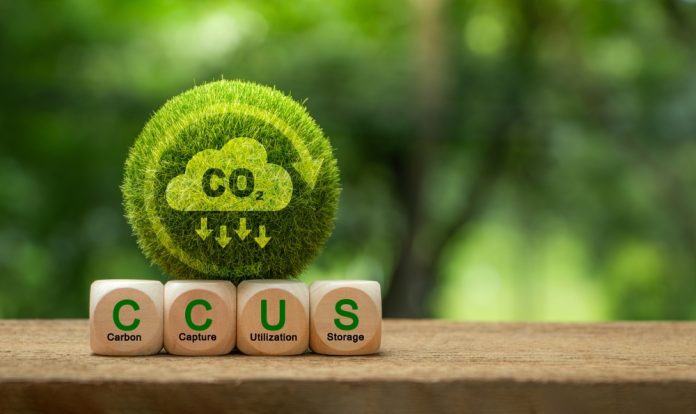Carbon capture, utilisation, and storage (CCUS) technologies are key to global decarbonisation efforts.
By removing carbon dioxide (CO₂) from industrial emissions or the atmosphere, CCUS either stores the gas underground or repurposes it for industrial use.
As net-zero emissions targets become more urgent, CCUS technologies are gaining momentum.
A recent IDTechEx report has highlighted how CCUS is evolving to meet growing market demands and technological advancements.
Focus shifts from utilisation to storage
A significant shift is occurring within the CCUS industry. Policymakers and industry leaders are increasingly focusing on CO₂ storage rather than utilisation.
Traditionally, around 75% of CCUS projects have relied on CO₂ utilisation, particularly through enhanced oil recovery (EOR), which increases oil extraction while storing CO₂ underground.
However, projections show that by the end of this decade, dedicated geological storage will surpass EOR as the primary method for managing captured CO₂. By 2045, global CO₂ storage capacity is expected to reach 1.6 gigatonnes per year.
CO₂ storage gains economic viability
The shift toward CO₂ storage is driven by evolving carbon markets and pricing mechanisms, which provide new financial incentives.
Unlike utilisation, storing CO₂ underground doesn’t create a direct product, but carbon pricing has made storage more economically viable.
For example, systems like the EU’s Emission Trading System (ETS) impose costs on greenhouse gas emissions, encouraging companies to reduce their carbon footprints.
As carbon pricing expands and prices rise, the cost of emitting CO₂ often exceeds the cost of capturing and storing it.
In the US, the 45Q tax credit offers further incentives for large-scale CO₂ storage projects. Major oil and gas companies like Shell and Chevron are now investing in CO₂ storage facilities, leveraging their expertise in subsurface geology to develop projects in saline aquifers.
Why CO₂ storage is crucial for climate goals
Permanently storing CO₂ offers greater sustainability benefits than utilisation, particularly when it comes to meeting climate targets.
Stored CO₂ results in net-zero or even net-negative emissions, while utilisation often returns the gas to the atmosphere after short periods, such as when synthetic fuels made from CO₂ are burned.
Moreover, global CO₂ storage capacity is enormous, estimated at over 15,000 gigatonnes—far more than the world’s current annual emissions of about 40 gigatonnes.
This potential dwarfs the demand for CO₂ utilisation, making storage a more promising long-term solution for reducing emissions.
The role of CO₂ utilisation
Despite the increasing emphasis on storage, CO₂ utilisation still plays a vital role, especially as a transitionary solution.
Existing fossil fuel infrastructure won’t disappear overnight, and certain sectors—like aviation and shipping—face challenges in adopting electrification. For these industries, low-carbon fuels made from captured CO₂, known as e-fuels, offer a decarbonisation path in the near term.
In some applications, CO₂ can be permanently stored in products, such as concrete, through processes that chemically bind the CO₂.
These applications may receive similar regulatory support as geological storage, with incentives provided under systems like the EU ETS. Such uses of CO₂ can also generate revenue, as the products, like concrete additives, can be sold commercially.
Infrastructure challenges
A key hurdle for the widespread adoption of CCUS technologies is the lack of infrastructure for large-scale CO₂ storage.
While significant projects like the Northern Lights Longship initiative are expected to be operational by 2024, many regions still lack the necessary pipelines and storage facilities to support extensive CCUS networks.
In the interim, CO₂ utilisation offers a practical solution, allowing existing carbon capture technologies to be deployed while storage infrastructure is developed.
As these projects come online, CCUS technologies will play a central role in helping industries and nations meet their emissions reduction goals.
CCUS technologies are becoming essential in the global fight against climate change. While CO₂ utilisation remains important, the trend is shifting toward permanent storage, driven by carbon pricing, government incentives, and the vast potential of underground storage.
As infrastructure expands, CCUS will be critical to achieving global decarbonisation targets and reducing atmospheric CO₂ levels.





